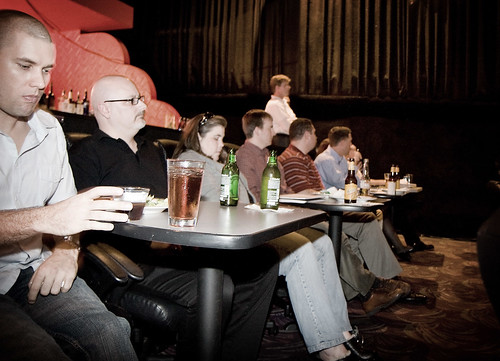
My family came to visit over Thanksgiving and, while my brother has hosted Thanksgiving at his place a couple times, this was the first time that I’ve hosted Thanksgiving here. My parents flew down from North Carolina and my brother came in from San Francisco. Quite pleasantly, my friend Anella was also able to join us, so in all it made for a really enjoyable Thanksgiving.
As I usually do, I kept my camera on-hand for photos. And, while I was pleased with how they came out, there were a few photo-nuances of which I made mental notes as well.
I really dig my Canon 40D and, to its credit, it does have an Auto-ISO mode (of sorts). Though it doesn’t offer settings for a shutter-speed threshold at which the ISO would be nudged upward (as Nikons do), its Auto-ISO is usually pretty competent. What I find odd, though, is that its “normal” ISO for ordinary scenes—its default ISO in Auto-ISO mode—is 400. You’d think that it’d simply choose the lowest possible ISO, and move it up from there as needed, but nooooo.
Most of my shots still worked out, and to be fair, I didn’t reject any of my shots based on ISO-grain alone. Still, if you look really closely at some of the images (at full resolution), you might be able to discern some grain there. If the shots happened to be at 1/15sec or something, that wouldn’t be so bad, but most of the shots were in the vicinity of around 1/200sec, so it’s not like the camera couldn’t have dropped the ISO to 200 and gone with a 1/100sec shutter speed. Well, c’est la vie. I suppose I’ll just have to set the ISO manually next time.
The other thing that I noticed is that my 430EX flash has no battery indicator whatsoever. More precisely, I tried to take a couple shots indoors—in the kitchen—only to find that my flash wouldn’t fire; later checking revealed that it was simply a case of the batteries not having enough juice, but it would have been nice if my flash could have told me that before I had attempted to go for those shots.
I was chatting with my chum Travis over IM today—we both happen to have flash units from Canon—and we ended up coming to the conclusion that Canon enthusiasts have little choice but to keep a spare set of batteries in his or her pocket throughout one’s flash work. Now if flash units from Nikon happen to have battery indicators, feel free to laugh at us Canon people. On the other hand, my hunch is that Nikon flash gear doesn’t have battery indicators either. I guess that’s just the way things go.

